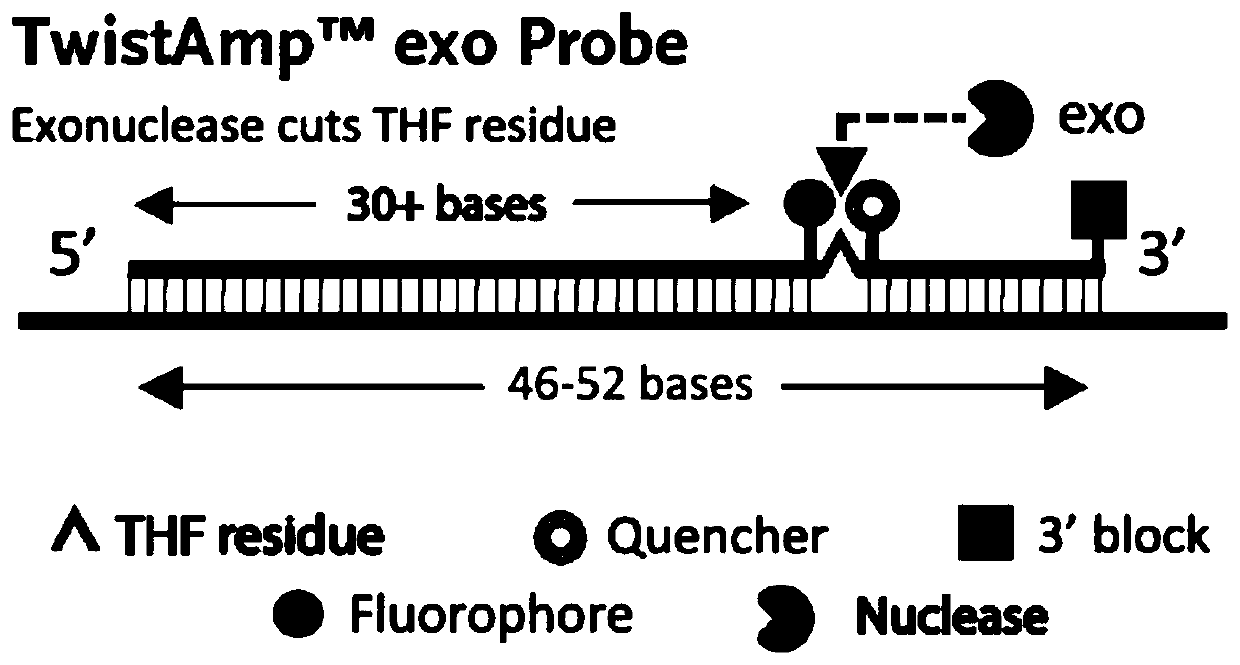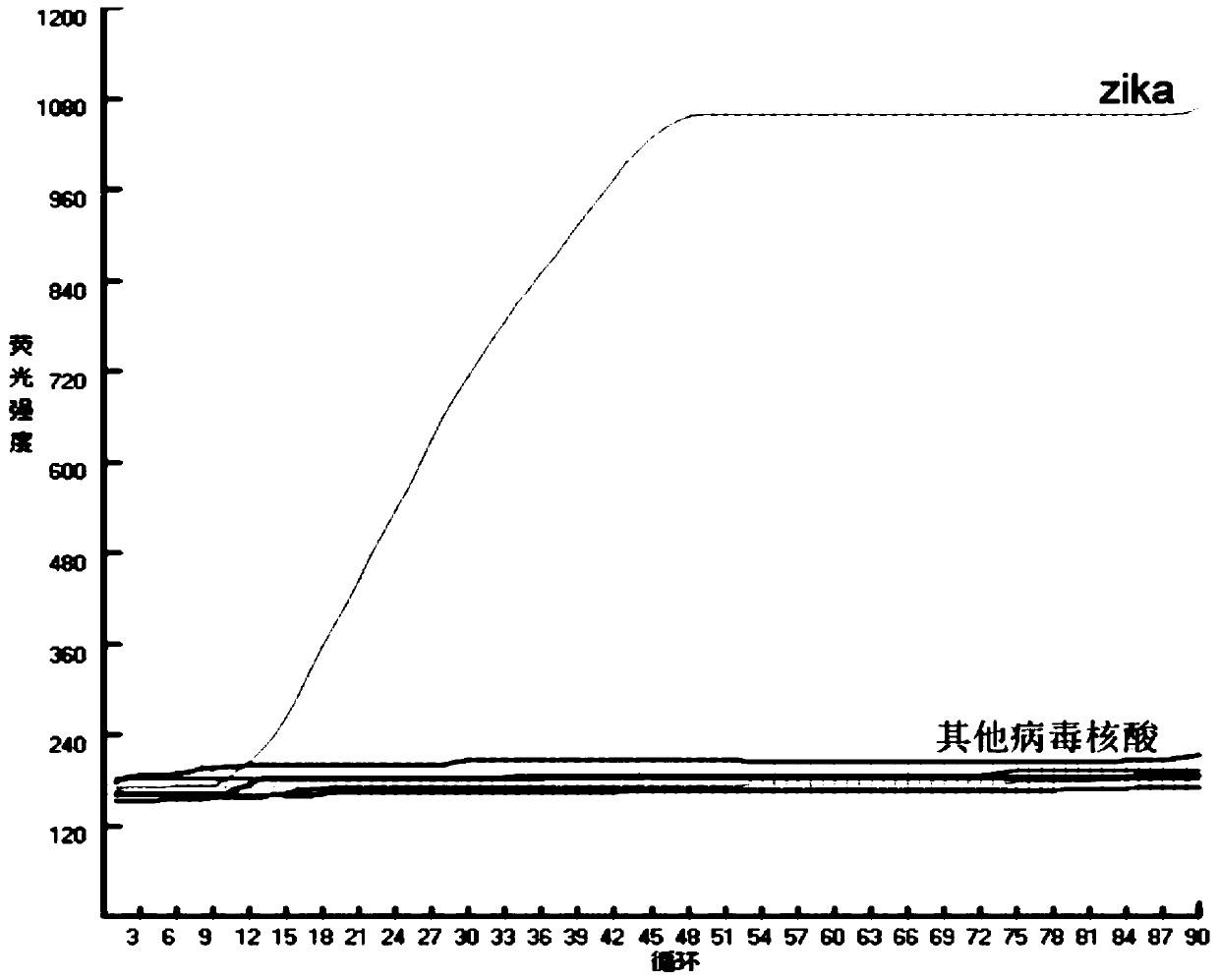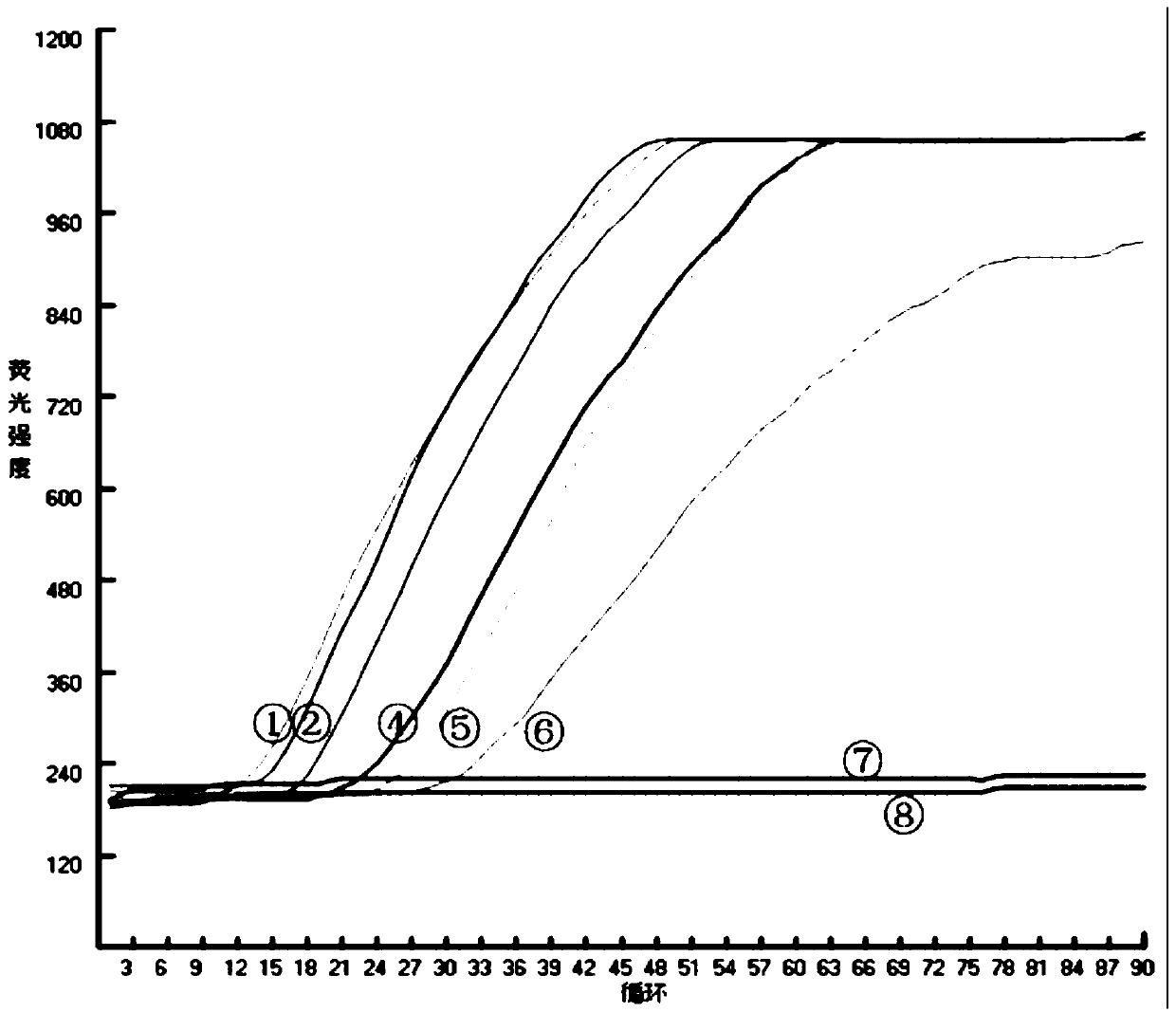Zika virus real-time fluorescence quantitative RT-RPA detection primers, probes and detection kit
A real-time fluorescence quantitative and Zika virus technology, which is applied in biochemical equipment and methods, microbial measurement/inspection, DNA/RNA fragments, etc., can solve the problems of high price, complicated operation, large volume, etc., and achieve fast detection speed , good effect of specificity
- Summary
- Abstract
- Description
- Claims
- Application Information
AI Technical Summary
Problems solved by technology
Method used
Image
Examples
Embodiment 1
[0044] Example 1 Establishment of real-time fluorescent quantitative RT-RPA detection method for Zika virus
[0045] 1. Preparation of in vitro transcribed RNA
[0046] The PCR method is used to introduce the T7 promoter into the upstream of the positive-strand virus reading frame and the downstream of the negative-strand virus reading frame, so as to obtain RNA consistent with the viral genome sequence after in vitro transcription. Use the cDNA synthesized by reverse transcription of viral RNA or the plasmid containing the artificially synthesized target gene as a template, and use the FastStart High Fidelity PCR system to prepare the following system:
[0047]
[0048]
[0049] The sequences of forward and reverse primers are as follows:
[0050] Forward primer: 5′-TAATACGACTCACTATAGGATGTGGGGTGCTCGG-3′
[0051] Reverse primer: 5′-TGCAGTCACCACTGACCTTACTAAGTT-3′
[0052] The full-length ZIKA NS1 gene was amplified, and its sequence is shown in SEQ ID NO:4.
[0053] T...
Embodiment 2
[0120] The optimization of embodiment 2 RPA primer, probe
[0121] 1. Primer / probe design
[0122] Through comparison and analysis of primer-probe design software, according to the design principles, the conserved region of the ZIKV NS1 fragment was selected to design 5 upstream and downstream primers and 3 probes. The sequences are shown in Table 3.
[0123] Table 3 ZIKV NS1 exo-RT amplification primer sequences
[0124]
[0125]
[0126] 2. Probe screening
[0127] By combining 5 upstream primers and 1 downstream primer one by one, the combinations are shown in Table 4, and the 3 probes were screened respectively. according to Figure 5 The results showed that the five upstream and downstream primer combinations all had better amplification reactions with the probe ZIKV-EXO-P1-4 (2662-2706), and the required reaction time was shorter, so the probe ZIKV-EXO-P1- 4 is better than ZIKV-EXO-P1-3 and ZIKV-EXO-P1-6.
[0128] Table 4 Screening of probes by 5 kinds of prim...
Embodiment 3
[0152] The optimization of embodiment 3 reaction system
[0153] 1. Optimization of magnesium acetate content in the real-time fluorescence RT-RPA detection system
[0154] Magnesium acetate is the key to start the whole RT-RPA reaction, and different contents of magnesium acetate have different effects on the reaction time. With reference to relevant literature, magnesium acetate reaction condition is preferably between 12mM-20mM, therefore, the first round of screening is that final concentration is 280mM magnesium acetate respectively with final concentration being 11.76mM (2.1 μ l), 13.44mM (2.4 μ l), 15.12 Six gradients of mM (2.7 μl), 16.8 mM (3.0 μl), 18.48 mM (3.3 μl), and 20.16 mM (3.6 μl) were used for the experiment and repeated twice.
[0155] Figure 10 Middle (A and B) shows that the time required for the reaction between 15.12mM (2.7μl)-20.16mM (3.6μl) is the least, and the optimal reaction concentration may be located in this interval. In the second round of...
PUM
 Login to View More
Login to View More Abstract
Description
Claims
Application Information
 Login to View More
Login to View More - R&D
- Intellectual Property
- Life Sciences
- Materials
- Tech Scout
- Unparalleled Data Quality
- Higher Quality Content
- 60% Fewer Hallucinations
Browse by: Latest US Patents, China's latest patents, Technical Efficacy Thesaurus, Application Domain, Technology Topic, Popular Technical Reports.
© 2025 PatSnap. All rights reserved.Legal|Privacy policy|Modern Slavery Act Transparency Statement|Sitemap|About US| Contact US: help@patsnap.com



